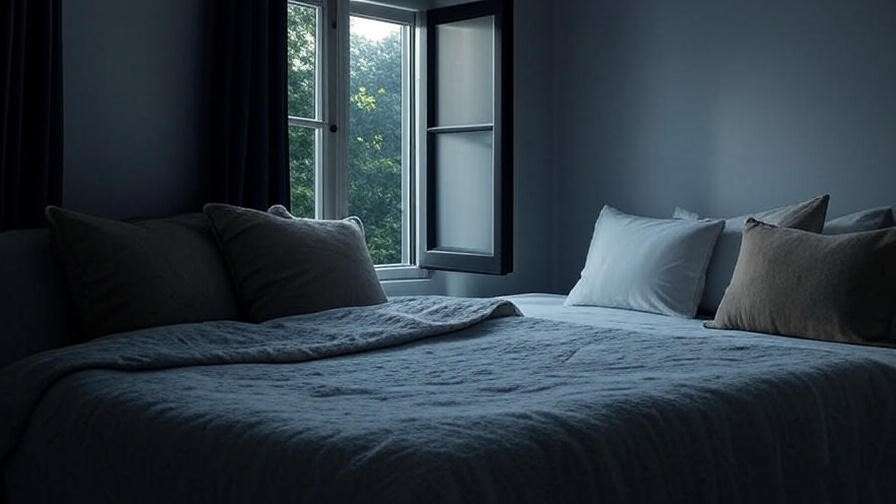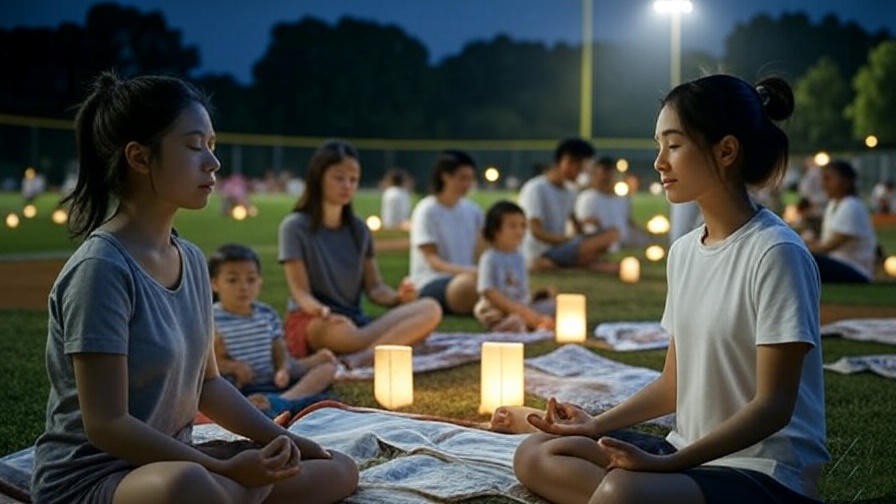Imagine waking up with the memory of a vivid dream so clear it feels like a movie you lived through—colors vibrant, emotions intense, and ideas sparking creativity for the day ahead. This is the magic of dream lanes, the pathways to restful sleep and immersive dreams that rejuvenate both body and mind. Yet, for many, poor sleep quality and fleeting dreams leave us feeling drained, uninspired, or disconnected from our inner selves. Stress, erratic schedules, and modern distractions often block these dream lanes, robbing us of the restorative power of sleep and the insights dreams offer. In this guide, we unveil seven evidence-based techniques to optimize your sleep, enhance dream vividness, and unlock a deeper connection to your holistic well-being. Backed by science and expert insights, these strategies will help you reclaim restful nights and vibrant dreams, boosting your happiness and mental clarity.
Understanding Dream Lanes: The Science of Sleep and Dreams
What Are Dream Lanes?
Dream lanes represent the mental and physical pathways that lead to deep, restorative sleep and vivid, memorable dreams. Scientifically, these pathways are rooted in the sleep cycle, which alternates between non-rapid eye movement (NREM) and rapid eye movement (REM) stages. REM sleep, occurring roughly every 90 minutes, is when most vivid dreaming happens. During this phase, the brain processes emotions, consolidates memories, and sparks creativity, as noted by the National Sleep Foundation. Factors like stress, poor sleep hygiene, or irregular routines can disrupt REM sleep, dimming the clarity of your dream lanes. By optimizing these pathways, you can enhance both sleep quality and the richness of your dreams.
Why Vivid Dreams Matter for Well-Being
Vivid dreams are more than just nighttime entertainment—they’re a cornerstone of mental and emotional health. Research from Harvard Medical School shows that REM sleep and dreaming help process complex emotions, reduce stress, and even improve problem-solving skills. Vivid dreams can act as a creative playground, inspiring artists, writers, and innovators. For instance, Paul McCartney famously dreamt the melody for “Yesterday,” showcasing dreams’ potential to unlock creativity. Moreover, vivid dreams contribute to emotional resilience, helping you navigate life’s challenges with greater clarity. In a world where stress and overstimulation are rampant, cultivating vivid dreams is a powerful step toward holistic wellness.
The Connection Between Sleep Quality and Dream Vividness
How Sleep Hygiene Shapes Your Dream Lanes
Sleep hygiene—the habits and environment that support restful sleep—directly influences the quality of your dream lanes. Poor sleep hygiene, such as exposure to blue light from screens or an uncomfortable bedroom, shortens REM sleep, reducing dream vividness. According to the American Academy of Sleep Medicine, maintaining a consistent sleep environment and routine strengthens circadian rhythms, ensuring longer REM periods. Simple changes, like dimming lights or avoiding caffeine late in the day, can significantly enhance your ability to access vivid dreams and wake up refreshed.
The Role of Holistic Well-Being
Holistic well-being, encompassing mindfulness, meditation, and emotional balance, plays a critical role in dream quality. Stress and anxiety elevate cortisol levels, which can suppress REM sleep. Practices like meditation calm the nervous system, promoting deeper sleep and more vivid dreams. Dr. Matthew Walker, a renowned sleep scientist, emphasizes that mindfulness practices increase REM sleep duration by reducing hyperarousal in the brain. By integrating these practices into your routine, you create a foundation for vibrant dream lanes and overall wellness.
7 Proven Techniques to Enhance Sleep and Unlock Vivid Dreams
Technique 1: Optimize Your Sleep Environment

Your bedroom is the gateway to your dream lanes. A sleep-conducive environment promotes deeper rest and richer dreams. Keep your room cool (60-67°F), dark, and quiet—use blackout curtains and a white noise machine if needed. Invest in a supportive mattress and breathable bedding. For example, Sarah, a 34-year-old teacher, transformed her sleep by swapping her old mattress for an ergonomic one and adding blackout curtains, reporting more vivid dreams within a week. Small tweaks to your space can make a big difference in accessing restorative sleep and vibrant dreamscapes.
Technique 2: Practice a Consistent Sleep Schedule
A consistent sleep schedule aligns your body’s circadian rhythm, maximizing REM sleep and dream vividness. Aim to go to bed and wake up at the same time daily, even on weekends. Apps like Sleep Cycle can track your sleep patterns and help you maintain consistency. Research from the Journal of Sleep Research shows that regular sleep schedules increase REM sleep by up to 20%. By sticking to a routine, you signal to your brain that it’s time to enter the dream lanes, paving the way for vivid, memorable dreams.
Technique 3: Incorporate Pre-Sleep Meditation
Meditation before bed calms the mind, reduces stress, and enhances REM sleep, making it a powerful tool for vivid dreams. A simple 5-minute practice can work wonders. Try this guided meditation: Sit comfortably, close your eyes, and focus on your breath. Visualize a peaceful scene, like a forest path (your dream lane), and let thoughts drift away. Studies from the University of California show that mindfulness meditation increases REM sleep duration by 15-20%. This practice not only improves sleep quality but also primes your mind for immersive, vivid dreams.
Technique 4: Keep a Dream Journal

Keeping a dream journal strengthens your ability to recall and enhance dream vividness. Each morning, write down every detail you remember—emotions, colors, symbols, or events. Use prompts like “What stood out in my dream?” or “How did I feel?” Dr. Deirdre Barrett, a dream researcher at Harvard, notes that journaling reinforces neural pathways for dream memory, making dreams feel more vivid over time. Start with a simple notebook by your bed, and within weeks, you’ll notice sharper dream recall and richer dream experiences.
Technique 5: Limit Blue Light Exposure
Blue light from screens suppresses melatonin, the hormone that regulates sleep, disrupting your dream lanes. Avoid screens 1-2 hours before bed, or use blue light filters on your devices. Blue-blocking glasses are another effective option. A 2023 study in Sleep Medicine found that reducing blue light exposure increased REM sleep by 10-15%, leading to more vivid dreams. By minimizing screen time, you protect your sleep cycle and create space for vibrant, immersive dreams.
Technique 6: Use Lucid Dreaming Techniques

Lucid dreaming—being aware you’re dreaming and potentially controlling the dream—amplifies the vividness of your dream lanes. Practice reality checks during the day, like asking, “Am I dreaming?” while checking if text changes when reread. The Mnemonic Induction of Lucid Dreams (MILD) technique involves repeating a phrase like “I will know I’m dreaming” before sleep. According to the Lucidity Institute, 60% of people can achieve lucid dreams with consistent practice. These techniques not only enhance dream vividness but also empower you to explore your subconscious creatively.
Technique 7: Support Your Body with Nutrition and Supplements
Nutrition plays a surprising role in sleep and dream quality. Foods rich in magnesium (like spinach or almonds) and vitamin B6 (like bananas) support melatonin production and REM sleep. Chamomile tea or a warm glass of milk can also promote relaxation. For supplements, magnesium or low-dose vitamin B6 may enhance dream vividness, but consult a doctor first. Try a bedtime smoothie with banana, almond milk, and a dash of honey for a sleep-boosting treat. A 2022 study in Nutrients linked B6 supplementation to improved dream recall, making nutrition a key ally in unlocking vivid dreams.
Common Mistakes That Block Your Dream Lanes
Overlooking Stress Management

Chronic stress is a major roadblock to vivid dreams, as elevated cortisol levels disrupt REM sleep. When you’re stressed, your brain prioritizes survival over creativity, limiting access to your dream lanes. To counter this, incorporate stress-relief practices like evening yoga or deep-breathing exercises. For example, a 10-minute yoga flow with poses like Child’s Pose or Legs-Up-the-Wall can lower cortisol levels, as supported by a 2021 study in Frontiers in Psychology. Journaling your worries before bed can also offload mental clutter, clearing the path for restful sleep and vibrant dreams.
Ignoring Sleep Disorders
Undiagnosed sleep disorders like insomnia or sleep apnea can severely limit dream vividness by fragmenting sleep cycles. Symptoms such as loud snoring, daytime fatigue, or difficulty falling asleep may indicate a deeper issue. If you suspect a sleep disorder, consult a sleep specialist or use online resources like the National Sleep Foundation’s assessment tools to identify next steps. Addressing these conditions not only improves sleep quality but also restores your access to vivid, restorative dreams.
Inconsistent Routines
Irregular bedtimes or habits like consuming caffeine or alcohol late in the day disrupt your circadian rhythm, shortening REM sleep. For instance, a late-night coffee can delay sleep onset by up to an hour, according to Sleep Medicine Reviews. Similarly, alcohol may help you fall asleep but reduces REM sleep, leading to fewer dreams. Commit to a consistent routine and avoid stimulants after 2 p.m. to keep your dream lanes open and accessible.
Expert Tips to Sustain Your Dream Lanes
Building a Long-Term Sleep Ritual
A nightly sleep ritual combines multiple techniques to create a sustainable path to vivid dreams. For example, a 30-minute routine might include dimming lights at 9 p.m., practicing a 5-minute meditation, sipping chamomile tea, and writing in your dream journal. Consistency is key—stick to this ritual for at least 30 days to see lasting improvements. Dr. Michael Breus, a clinical psychologist and sleep expert, recommends tailoring your ritual to your lifestyle, ensuring it feels natural and enjoyable for long-term adherence.
Tracking Progress and Adjusting
To optimize your dream lanes, track your sleep and dream patterns for 30 days. Use a notebook or apps like SleepScore to log sleep duration, quality, and dream vividness. Note which techniques work best—perhaps meditation enhances your dreams more than nutrition tweaks. Adjust your approach based on these insights. For example, if blue light filters aren’t enough, try eliminating screens entirely before bed. This data-driven approach ensures your dream lanes remain clear and effective.
The Broader Impact of Vivid Dreams on Happiness and Well-Being
Dreams as a Tool for Self-Discovery
Vivid dreams offer a window into your subconscious, revealing hidden emotions and insights. For instance, recurring dreams about flying may reflect a desire for freedom, while stressful dreams might highlight unresolved anxiety. By analyzing these patterns, you can gain clarity on personal goals or challenges. Take Emma, a 29-year-old graphic designer, who used dream journaling to identify stress triggers, ultimately reducing her anxiety through therapy. According to Dr. Rubin Naiman, a sleep and dream expert, engaging with dreams fosters self-awareness and emotional growth, making them a powerful tool for personal development.
Integrating Dreams into Holistic Wellness
Vivid dreams amplify the benefits of holistic wellness practices like mindfulness, gratitude, and positive psychology. For example, practicing gratitude before bed—writing down three things you’re thankful for—can promote positive emotions, influencing dream content. A 2023 study in Journal of Positive Psychology found that gratitude practices increased dream positivity by 25%. Combining dream-focused habits with meditation and journaling creates a synergy that enhances sleep quality, emotional resilience, and overall happiness, aligning with the principles of holistic well-being.
Frequently Asked Questions (FAQs)
What Causes Vivid Dreams?
Vivid dreams are influenced by longer REM sleep, reduced stress, and healthy sleep habits. Factors like diet (e.g., vitamin B6-rich foods), meditation, and journaling can enhance dream vividness. External factors, such as medications or stress, may also play a role.
Can Everyone Learn to Have Vivid Dreams?
Yes, most people can improve dream vividness with consistent practice. Techniques like journaling, meditation, and lucid dreaming exercises strengthen dream recall and intensity over time, typically within 2-4 weeks.
Are Lucid Dreams Safe?
Lucid dreams are generally safe and can be empowering. However, excessive focus on lucid dreaming may disrupt sleep for some. Start with gentle techniques like reality checks, and consult a sleep expert if you experience sleep disturbances.
How Long Does It Take to See Results?
With consistent application of the seven techniques, most people notice improved sleep and dream vividness within 2-4 weeks. Tracking progress can help you refine your approach for faster results.
Conclusion
Unlocking your dream lanes is a journey to better sleep, vivid dreams, and enhanced well-being. By optimizing your sleep environment, maintaining a consistent schedule, practicing meditation, journaling dreams, limiting blue light, exploring lucid dreaming, and supporting your body with nutrition, you can transform your nights and enrich your days. These seven proven techniques, grounded in science and expert insights, empower you to reclaim restful sleep and tap into the creative, emotional, and psychological benefits of vivid dreams. Start tonight with one technique—perhaps a 5-minute meditation or a dream journal entry—and track your progress for 30 days. Your dream lanes await, ready to guide you toward greater happiness and holistic wellness. Share your dream experiences in the comments or on social media, and let’s inspire each other to dream vividly!













